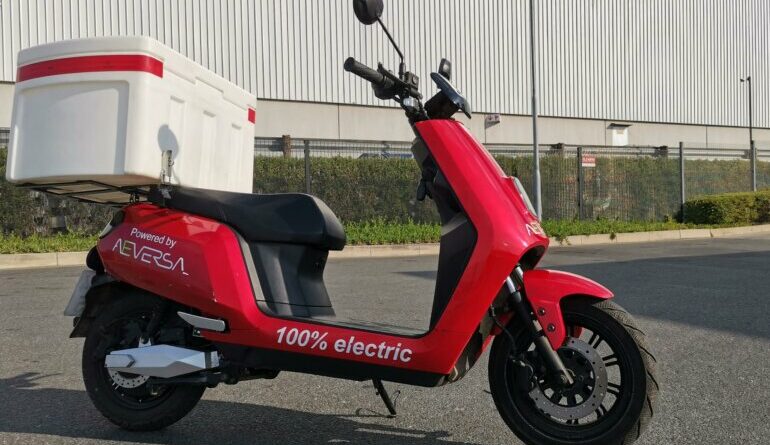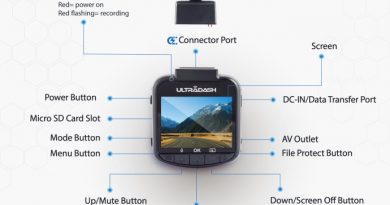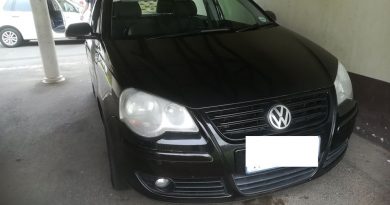AEVERSA is reducing the cost of deliveries while fuel prices hike
• Six cents per kilometre cost of deliveries
• Deliver parcels quickly, quietly and cost-effectively
• A prime solution for short-distance transportation
• Less maintenance results in more time on the road
The online economy has rapidly grown since Covid-19 changed how distribution is done. Products are ordered from various online stores and delivered within minutes. However, the increased demand for online deliveries comes at a cost to drivers, delivery operators and customers.
With green solutions like electric scooters, traditional delivery methods such as motorbikes and cars are simply uneconomical and outdated. That is why the adoption rate of electric scooters for short-distance transportation is increasing as companies move to more economical and greener solutions.
Electric scooters have proven to be reliable and have a track record of saving money for delivery companies worldwide. Some benefits of using electric scooters for delivery applications include lower running costs, improved safety, easy storage, better security and zero emissions.
“To demonstrate to the local industry just how efficient electric scooters are, we showcased our S5 electric scooter at the recent Futuroad Expo in Gauteng. With an operating cost of six cents per kilometre, at a base energy price of R2/kW, they save you lots of money,” says Rick Franz, CEO of AEVERSA. “This makes electric scooters an investment that is more sustainable, eco-friendly and socially acceptable than conventional delivery motorbikes.”
Electric scooters are nippy and deliver parcels quickly, quietly and cost-effectively. Electric scooters have few moving parts and need little servicing at longer intervals, resulting in less downtime and more time on the road working for you. Servicing an electric scooter is also cheaper than conventional motorbikes.
“With benefits like these, the market cannot overlook the option of changing delivery fleets from conventional motorbikes to electric scooters,” says Franz. “Electric vehicles are approximately ten times more efficient at converting energy into motion than internal combustion engines, resulting in massive savings when one switches one’s short-distance transportation fleet to electric.”
AEVERSA (Applied Electric Vehicle Energy Reticulation Systems Africa), a pioneer in the new-energy transport market, consults the industry on the best ways to convert to battery-electric vehicles. It offers a “complete solution” from specifying the required vehicles to planning and installing charging infrastructure. Its product offering includes maintenance and flexible financing options for infrastructure and vehicles. The company’s CEV (Commercial Electric Fleet) product range comprises battery-electric 3.5-tonne trucks, battery-electric panel vans and a range of electric scooters.
Franz explains that going electric will give you a competitive advantage in the market. “The savings with delivering electric are huge – in money, time and the environment. The concept is actually very simple. Electric scooters save on servicing and energy costs. When you add up all the costs, internal combustion engine scooters are much more expensive to own.”
It is easy to recharge electric scooters. Plug them into any standard three-pin 15-Amp wall socket to recharge or use a high-speed 30-minute fleet charging system. Charging is not restricted to your base of operations as the drivers can recharge wherever they find a power outlet. Being able to use household plug points means you need no special infrastructure. AEVERSA’s scooter range also offers a dual battery system where one battery is left at your depot charging while you drive with the other. It takes less than a minute to change a battery, giving one a range of 65 to 85 kilometres per battery.
The chargers are rated with an empty to full charge time, but the S-Series electric scooters can be partly charged too. This is called opportunity charging. If you charge the battery from empty to full daily, you will use less than R200 electricity per month, assuming an R3/kW electricity price.
The efficient 3kwh Bosch electric motor in the S5 electric scooter ensures maximum battery life and range. The S-Series comprises three models, the S5, S8 and S10. The dual battery system of the S10 provides a range of approximately 180 kilometres at different driving speeds of around 60 to 100 km/h. If driven faster, at around 110 km/h, its range will be approximately 160 kilometres.
AEVERSA offers important tips for choosing the best electric scooters for your short-distance transportation fleet. Firstly, decide how you will use your electric scooter. Determine the range, required power, torque and speed, charging time and number of charging stations. Decisions about introducing advanced technology and connectivity, seat height, bike position, vehicle weight, battery life and warranty must also be considered.
“Electric scooters are designed to go easier on the environment and reduce your carbon footprint. However, quick and cost-effective deliveries mean happy customers and happy merchants. With the high fuel price impacting the cost of deliveries, electric scooters will reduce your monthly cost by 50 to 60 percent,” concludes Franz.
For more information or to ask AEVERSA to assist you in converting to electric scooters, visit https://www.aeversa.com/
Also View:




